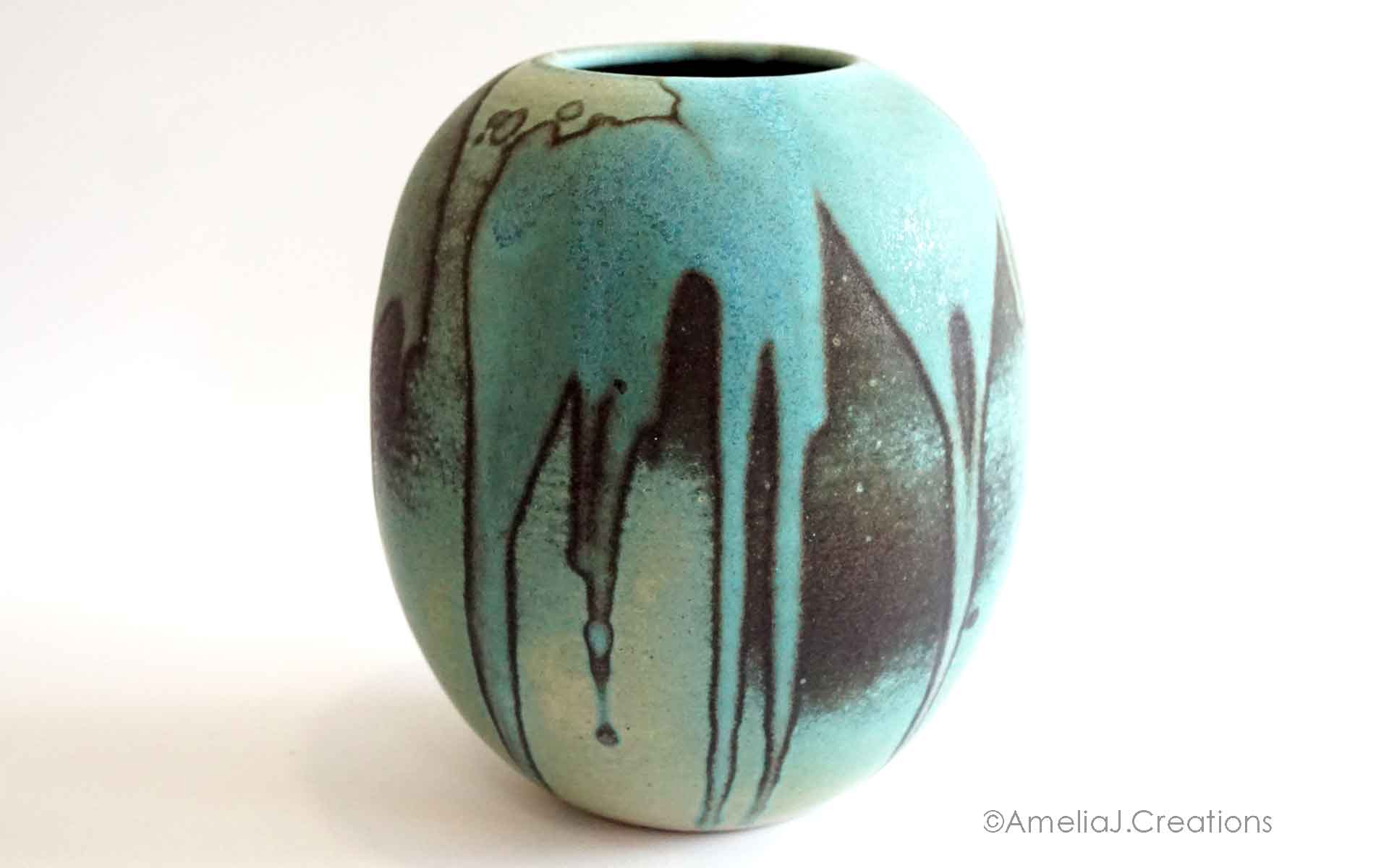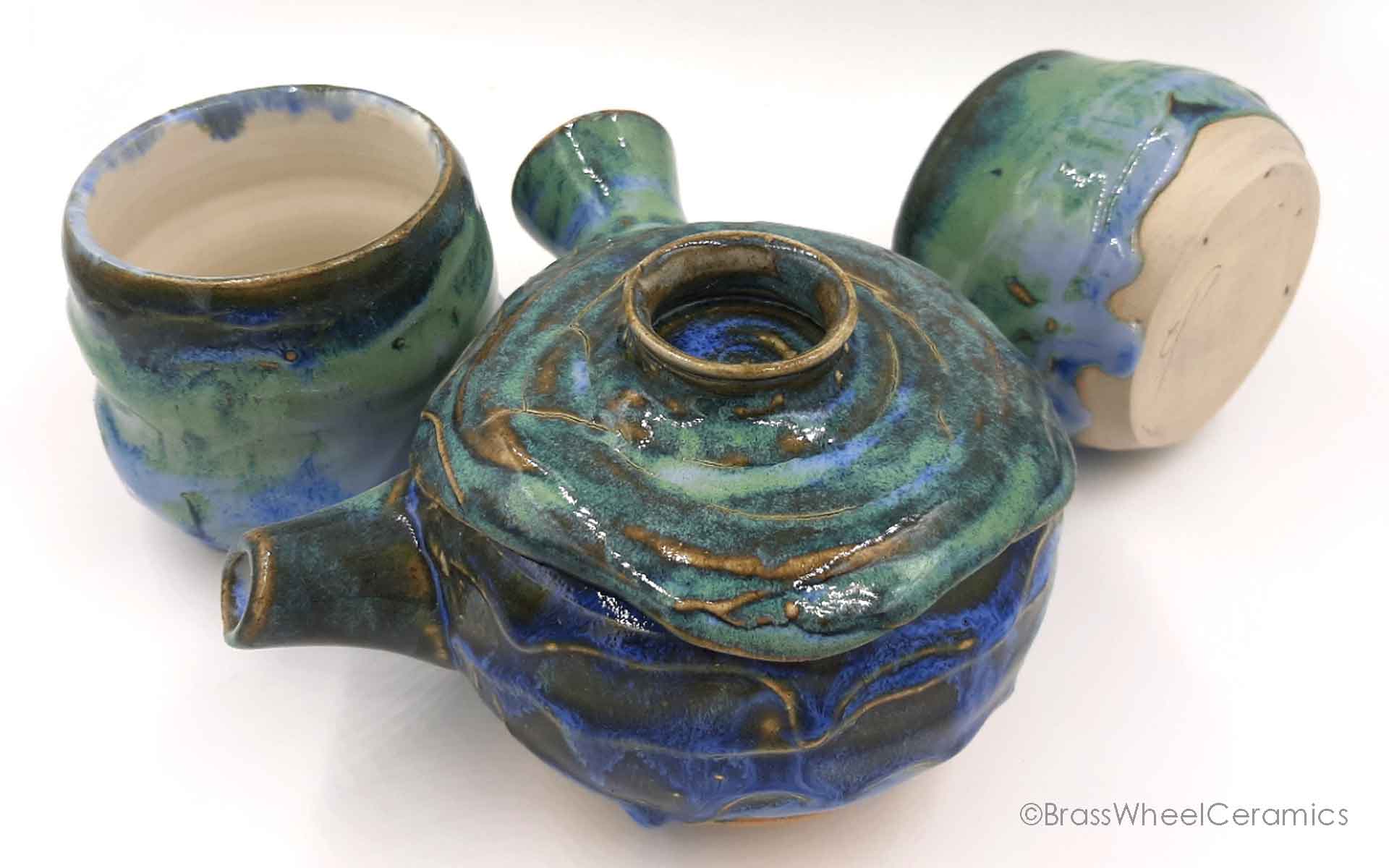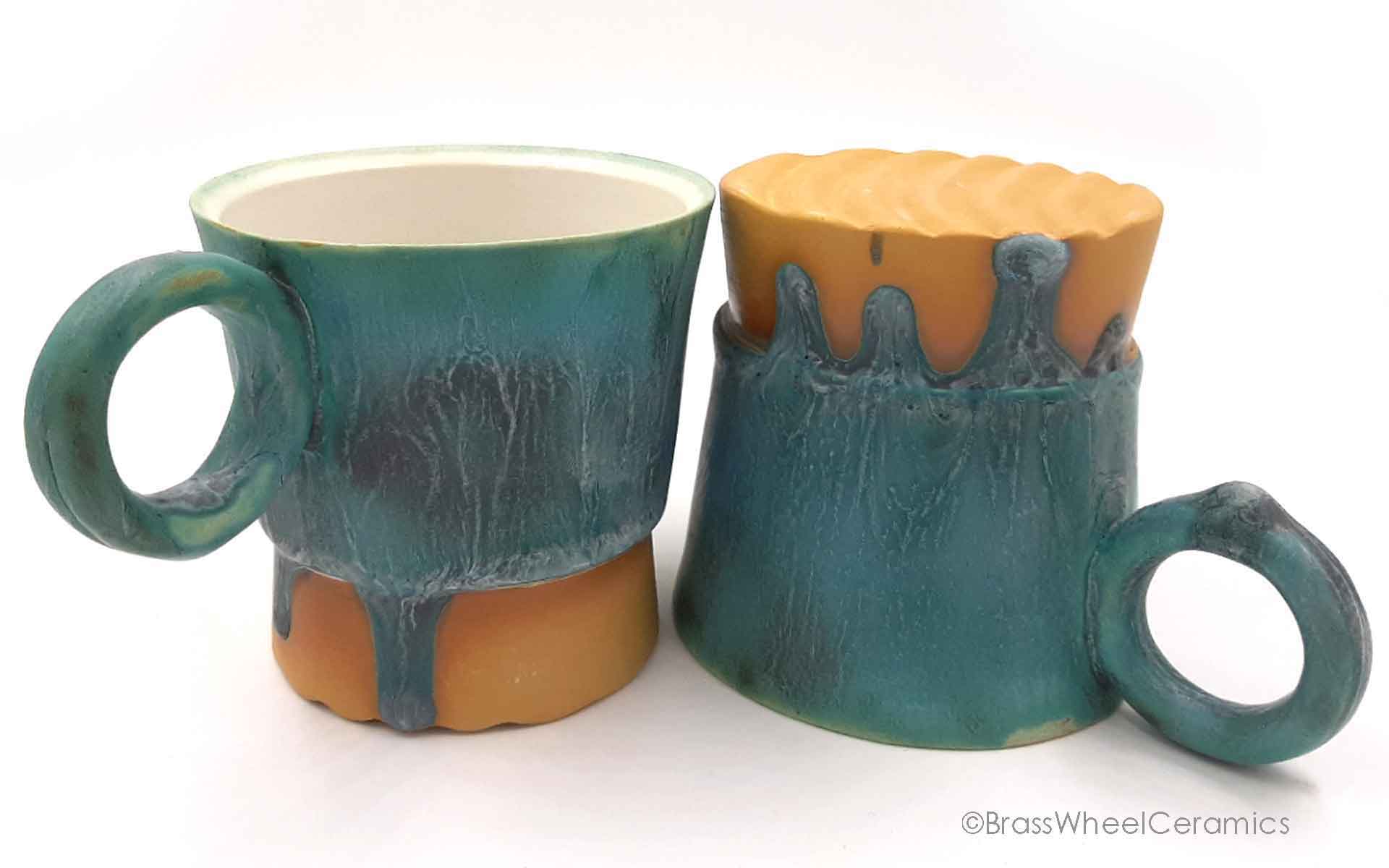
10 Mar The art of glaze making
The art of glaze making feels very similar to the work of alchemy. Alchemy is a natural philosophy and ancient practise that still fascinates scientists today. Alchemists live in a world of elements, substances, metals, gases, liquids, and fire. They are searching for the elixir of life, gold, knowledge, medicine, wisdom and all the secrets of the cosmos. Often when I am working in the ceramic studio, I am reminded of a science laboratory filled with an array of jars and flasks of chemicals, tubs of powders and endless tools for measuring and stirring liquids. Laboratories and ceramics studios both contain hazardous substances that can be a danger to us, though on the other hand, possess materials that work like magic to produce a magnificent language of form, texture and colour. The art of glaze making is like no other art form that I know of. Imagine creating a painting with a palette of paints that were all the same anonymous paint colour, and then magically, overnight, those colours react and evolve into entirely new pigments and textures.
During my time as an art technician, I had a shed load of materials and ingredients at my disposal; some were old and discoloured, while others were brand new and bursting with possibilities. The names of all the ingredients were completely new and exciting to me and I couldn’t wait to discover their strengths. Most glazes are composed of silicas, fluxes and stabilisers to help control melting points, create the glass effect and to stiffen to glaze so that it doesn’t drip. Beyond the core ingredients, there are numerous substances that diversify your glaze results. There are endless colours; vibrant, earthy, pastel or transparent. The textures, surfaces and depths can be smooth and glossy whilst others mimic the exterior of volcanic rock, filled with pores and bubbling with energy. There is also the experimentation of how you apply the glazes, techniques such brushing, dripping, pouring, splashing and spraying all contribute to the mystery of the art of glaze making.
If you’re interested in glazing, 137° Ceramic Art Studio offers weekly classes that take you through the entire ceramic process from beginning to end, you’ll have the chance to try glazes and decoration techniques. You can find more information here!
I previously had the task of glazing over 25 stoneware pots with only a choice of three different homemade glazes, there was a deep ultramarine blue, a turquoise and green-ochre colour. With each and every pot, I chose to apply these glazes in various ways, sometimes I only used two glazes, instead of just one, or all three. By experimenting with the layering of the glazes, for example, I discovered that adding blue on top of green created a different colour to layering green on top of blue. Finally, when I opened the kiln, the results blew me away! I couldn’t believe how unique each pot was, especially considering that I was limited to only three glazes.
For those of you who have made your own glazes, you will know that altering your recipe in any way could change your entire glaze, for better or worse! The journey of understanding glazes is long, it requires patience, organisation and persistence. We have to remind ourselves that glazes often don’t come out as intended, and there are many factors that can influence the glaze results. For example, it is crucial to pair your glaze with the right clay; stoneware, porcelain and earthenware clays all require different firing temperatures, and therefore different glazes that react best at that temperature.
Glaze making is not only cheaper than buying pre-made glaze powders, but it’s also very exciting and allows you to really connect with your ceramics practise. You will gain a ton of knowledge and find new inspiration on how to decorate your ceramics. There are many books available containing easy to follow instructions for glaze making. I recommend ‘Developing Glazes’ by Greg Daly, it is an excellent book if you are a beginner in glazing. I also like to visit Glazy to find glaze recipes and get advice and guidance from a large online community!
What you will need:
• A recipe
• Ingredients
Once you’ve discovered your chosen glaze making ingredients, you can purchase them online, I recommend using Angela Colls’ online shop.
Equipment:
• Plastic containers with a lid, around 10L or more
• Two mesh sieves, one large and one small
• large brushes for mixing
• Electronic weighing scale
• metal bowl
• measuring spoons
• Water
• A pair of protective gloves
• a protective face mask
• Sticky labels
• Permanent marker
Most ceramicists produce their own test tiles for glazes, allowing them to organise and control their glaze making. If you are going to carry out tests, I would recommend keeping a glaze journal; make notes on what glazes you use and how you apply them. You could also take photographs of the results and paste them into your journal. If you discover a result that you love, you then have a record of how you achieved it, which will save you a lot of time and money. Soon, your glaze bible will be filled with notes, because once you start experimenting with handmade glazes, it can be very difficult to stop! Whatever happens, don’t be discouraged if a glaze comes out wrong, just embrace the process and the feeling of being an alchemist in the making!
Written by Freya Saleh





